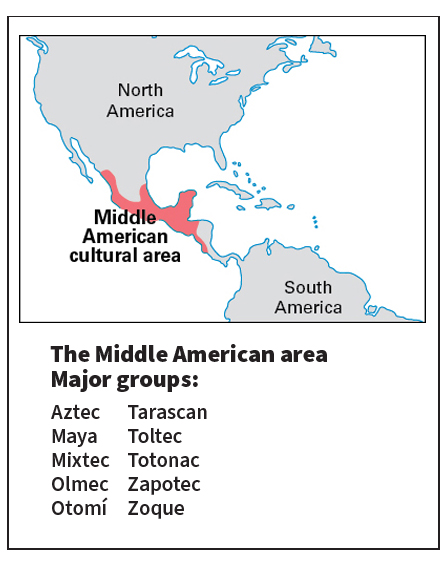Mixtec << MEESH tehk >> maintained one of the most important cultures in central Mexico from about A.D. 900 until about 1520. Beginning in about A.D. 900, they established kingdoms in mountainous parts of what are now the Mexican states of Guerrero, Oaxaca, and Puebla. The Mixtec kingdoms competed with one another for political power in the region. Beginning in the 1200’s, Mixtec kingdoms integrated with kingdoms of the Zapotec through intermarriage of rulers and political alliances. The Mixtec also conquered several smaller Zapotec kingdoms in the Valley of Oaxaca. Later, the Mixtecs came under the rule of the Aztec Empire.

The Mixtec produced many sophisticated works of art, including ceramics, jewelry, and small carvings. They used such materials as bone, clay, gold, jade, silver, turquoise, and wood. Among the most important surviving works of Mixtec art are several codices (historical manuscripts). These books used pictograms (a system of writing with pictures) to record information about ruling families and their conquests. The Mixtec style of art had widespread influence on other Middle American cultures, including that of the Aztec.
About 300,000 people who speak Mixtec dialects still live in the states of Guerrero, Oaxaca, and Puebla. Most are farmers and herders.
